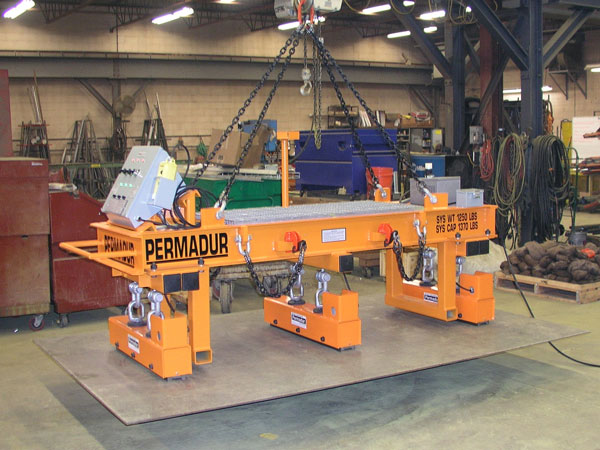What is Steel Plate Handling?
Steel plate handling is a critical aspect of operations in various industries. It involves the moving, lifting, and positioning of steel plates, which are large, flat pieces of steel typically used as raw materials or components in building structures and machinery. Given these plates' substantial weight and size, handling them safely and efficiently requires specialized equipment and techniques.
To manage these challenges, steel plates are frequently handled using magnet grippers. These devices utilize powerful magnets to securely latch onto the steel surface without direct contact. This method provides a strong, stable grip that reduces the risk of slippage and accidents. Magnet grippers are particularly effective because they can handle hefty loads, and the magnetic force can be easily and quickly connected and disconnected, enhancing the efficiency of the handling process.
Should You Use Steel Plate Handling Systems for Your Lifting Needs?
Choosing steel plate handling using manipulators over other lifting methods like manual handling or using electric hoist cantilever cranes has several compelling advantages, primarily centered around efficiency, safety, and cost-effectiveness. Why should you choose steel plate handling manipulators?
- Efficiency: Steel plate manipulators significantly increase loading speed and reduce the number of operators needed from several to just one. This improvement in efficiency, often quantified at about 31%, streamlines the production process, particularly in industries where heavy and oversized steel plates are frequently used, such as in the manufacturing of elevators or electrical cabinets.
- Safety: Manual handling of heavy steel plates not only requires multiple workers but also poses significant risks of industrial injuries due to their weight and sharp edges. Traditional methods like electric hoist cantilever cranes, while somewhat reducing the physical burden, still carry risks due to heavy operations and a lack of safety devices. In contrast, manipulators are equipped with safety features like load indicators, misoperation protection functions, and ergonomic controls, drastically reducing the risk of accidents.
- Cost-Effectiveness: Reducing the number of operators needed for handling, along with enhanced speed and safety, translates into direct labor cost savings—estimated at around 43%. Additionally, reducing workplace injuries leads to lower costs related to healthcare, compensation, and lost workdays.
When is Steel Plate Handling the Right Option?
Choosing a steel plate handling system is particularly advantageous when regularly handling large volumes of heavy and large plates. Industries that benefit the most include those involved in heavy manufacturing, construction, and anywhere raw materials are processed into more complex assemblies. The decision to switch to or incorporate manipulators should be based on a combination of factors, including the scale of operations, the frequency of handling heavy plates, and the prioritization of worker safety and operational efficiency.
You should not hesitate to contact our team for more information on this and other lifting options. We are more than just a distributor/manufacturer; we are problem solvers here to help you with your lifting and material handling needs.


